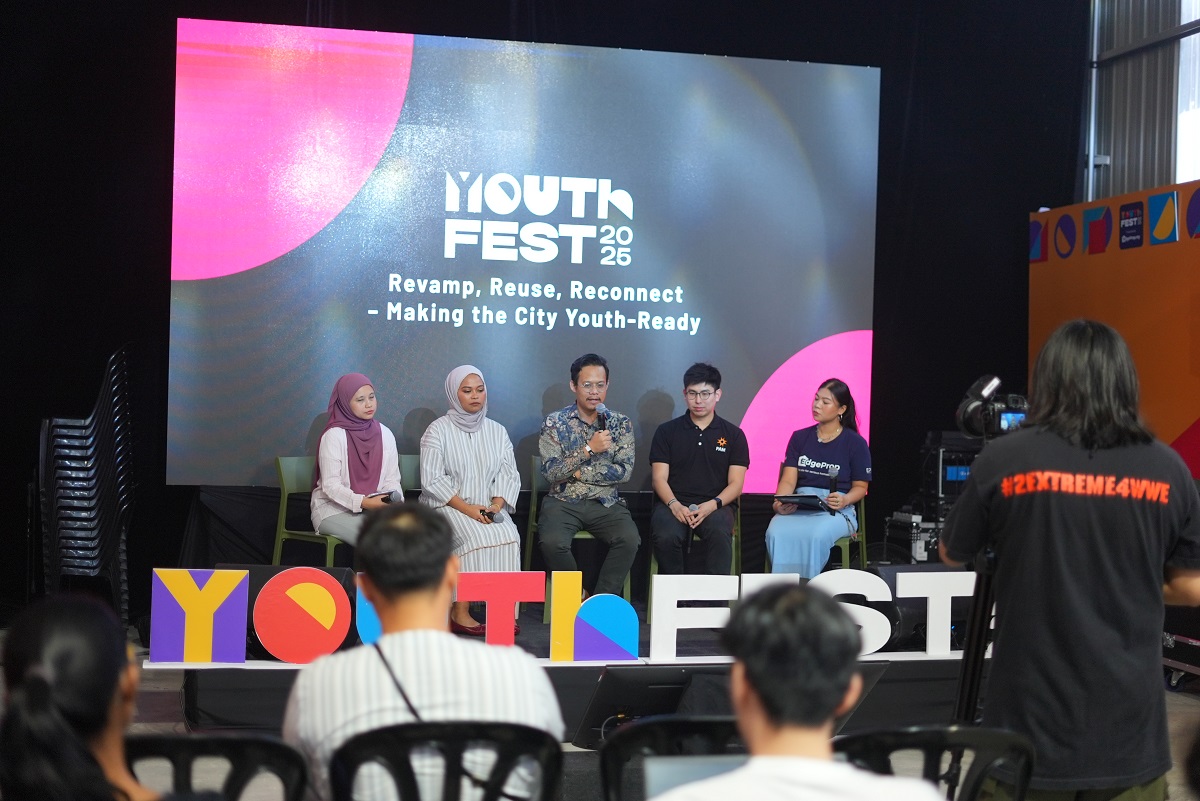- Despite the lack of spaces specifically dedicated to youth, young adults should take a proactive approach to claiming public spaces.
KUALA LUMPUR (May 19): Broken benches, dangerous walkways, and missing chill spots: this is the reality facing Malaysia's urban youth. Are our cities designed for them?
Can we reimagine urban spaces to be walkable, safe, and youth-centric? This is the subject discussed at YouthFest 2025, held by EdgeProp Malaysia, in the session titled “Revamp, Reuse, Reconnect—Making the City Youth-Ready,” which aimed to foster growth mindsets among young Malaysians.
"Public spaces for young adults are often insufficient. We do have parks, libraries, plazas, and malls, but a space that is truly designed for youth is still missing,” Kerja Jalan co-founder Awatif Ghapar stressed in the discussion.
She said that even though the cities have malls to cater to the youths’ needs, these might not be inclusive because malls are designed to encourage spending. Whereas youths desire a place to express themselves.
“I just want to be with my friends; I just want to be able to engage, not necessarily wanting to hang out in a cafe. So, how do we build that kind of space and sweet spot for the youth? That’s one of the focuses we need to improve,” she emphasised.
Empowering youth to claim their space
Qhawarizmi Norhisham, an architect from the Malaysian Institute of Architects graduates community (PAM NXT), said youths themselves should take a proactive approach to claiming public spaces.
“If you're expecting other people to cater to your every need, I don't think you're going to make it. You can only get more public spaces by organising and presenting your opinions and suggestions via the right channels.
“It is also important to be aware that not all physical spaces are suitable for public use, but young Malaysians shouldn’t only think that the city should provide more public spaces. They should also recognise areas where they can actively participate and contribute to those communities,” he advised.
Decentralising city development
Meanwhile, Think City associate Aisyah Safiai indicated that the walkability and accessibility of public transport remain low because people prefer using their cars to avoid overcrowding on the transit. She suggested that the government develop suburban areas to reduce the traffic of people heading to the city centre.
“The city development should be ‘decentralised’. Instead of focusing on KL as the primary economic zone, the government should try to develop the suburbs as well. This way, there won't be so many people trying to congest the roads,” she elaborated.
Aisyah added that the government can increase the frequency of public transport. "If I go back home from work, I take the MRT at Pasar Seni. Sometimes the frequency is every three minutes, every seven minutes, which isn't consistent," she said.
Navigating community needs
Sharing a case study on gaining community involvement to revitalise a public space, PAM Next architect and interior designer Esmonde Yap revealed that it’s not easy to garner community approval to revitalise a public space.
“There was a resident who opposed our plans to beautify an area. We had been explaining our plans to her, but she strongly opposed them. While open to some improvement, she suggested the Chinese community's desire for an altar. We quickly agreed to include an altar in order to get consent to revitalise the area.
“So I think that's part of what it means to be a community leader: taking into consideration the needs or desires of the population and trying to implement them in the area so everyone can live peacefully and like a community family. That's part of community leadership,” Yap stressed.
Audience poll highlights desire for small, unique public areas
During the panel discussion, EdgeProp Malaysia conducted an interactive session with the audience to understand what kind of public space layout the audience would like to have. Up to 57% voted to have small and indie spaces in their surroundings.
Commenting on the polling result, Yap pointed out that hipster indie spaces are starting to grow around the city. However, the creation of these spaces often depends on financial resources. A lack of funding can result in only a select few being established.
“The key contributing factors include government policies and economic constraints. These are primary reasons for the limited availability of public spaces in the city, as some areas are privatised and inaccessible. Consequently, only existing public areas like street corridors and parks can typically be utilised. Furthermore, spaces within buildings are often private residences, making public access difficult,” he explained.
Qhawarizmi also agrees that small and specialised spaces are popular among young adults. “Quality design shouldn’t be limited to high-end developments; it should be found even in simple eateries. As society increasingly values good design, this growing desire for well-designed spaces could gradually transform the entire city,” he said.
Want to have a more personalised and easier house hunting experience? Get the EdgeProp Malaysia App now.






